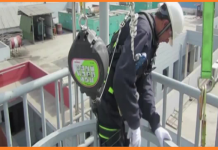Contents
Introduction to Accident Investigation
Accident investigation serves as a process in maintaining workplace safety and operational efficiency. The primary purpose of accident investigation is to analyze incidents meticulously to prevent their recurrence and to identify potential hazards that might jeopardize safety in the future. This systematic approach involves collecting and examining data, interviewing witnesses, and scrutinizing conditions surrounding the incident to establish a comprehensive understanding of what transpired.
It is essential to highlight that the primary aim of accident investigation is not to assign blame or administer disciplinary actions. Rather, the focus is on uncovering the root causes and contributing factors of accidents to develop effective preventive measures. By understanding the underlying reasons for an incident, organizations can implement changes that enhance safety protocols, improve employee training, and refine operational procedures, thereby reducing the likelihood of future occurrences.
Accident investigations are driven by several key objectives. First and foremost, they aim to identify the immediate and root causes of the accident. Discovering these causes enables organizations to understand where systems or processes may have failed and how these failures can be addressed. Second, the investigations seek to uncover any latent hazards that may not have been evident prior to the incident. These hazards, once identified, can be mitigated to prevent future incidents.
Furthermore, accident investigations strive to clarify responsibilities and ensure that all parties involved understand their roles in maintaining safety. By defining and clarifying responsibilities, organizations can reduce error-producing situations and foster a culture of accountability and continuous improvement. Overall, the ultimate goal of accident investigation is to create a safer working environment by learning from past incidents and proactively addressing potential risks.
The Role of Accident Investigation in Safety Improvement
Accident investigation plays a pivotal role in enhancing operational safety across various industries. When conducted effectively, these investigations serve as a critical tool for identifying systemic flaws within the management system. By meticulously analyzing the sequence of events leading to an accident, investigators can uncover underlying issues that may not be immediately apparent. These issues might include procedural deficiencies, lapses in communication, or inadequate training programs. Addressing these root causes helps to fortify the safety framework, thereby preventing the recurrence of similar incidents.
Furthermore, accident investigations provide invaluable insights into hazard discovery. They help organizations to pinpoint specific risks that may have been previously overlooked or underestimated. This proactive approach enables the implementation of targeted safety measures, which are essential for mitigating potential dangers. Consequently, the iterative process of investigation and improvement promotes a culture of continuous safety enhancement, ensuring that operational environments remain as safe as possible.
However, the efficacy of accident investigations can be significantly undermined if they are used primarily for punitive purposes. When the focus shifts from understanding and correcting systemic issues to assigning blame and administering punishments, the true purpose of the investigation is lost. This punitive approach can create a culture of fear among employees, discouraging them from reporting incidents or near-misses. As a result, critical opportunities for learning and improvement are missed, and the overall safety of the organization may suffer.
In essence, the goal of accident investigation should always be the promotion of safety and the prevention of future accidents. By maintaining a non-punitive stance, organizations can encourage open communication and foster a collaborative environment where safety is prioritized. This, in turn, maximizes the potential of accident investigations as a powerful tool for identifying hazards and enhancing operational safety.
Understanding and Addressing Root Causes
Accident investigation aims to uncover the root causes of incidents, which often reveal underlying management system deficiencies. These root causes are the foundational issues that precipitate accidents, distinguishing them from superficial symptoms. By focusing on and addressing these core problems, organizations can implement more effective preventive measures.
Human error and equipment malfunctions are frequently identified as immediate causes of accidents. However, these factors usually point to deeper, systemic issues within an organization’s management systems. For example, insufficient training programs, inadequate maintenance schedules, and lack of procedural compliance can all contribute to human errors and equipment failures. These systemic issues, if not addressed, remain latent hazards that potentially trigger future incidents.
Identifying root causes requires a thorough and methodical approach to accident investigation. This process involves gathering detailed information about the incident, analyzing this information to identify patterns or recurring issues, and tracing these issues back to their origin within the management system. Techniques such as the “5 Whys” and fault tree analysis are commonly used to peel back the layers of an incident, revealing the root causes that need to be addressed.
Addressing root causes is critical for effective accident prevention. Merely correcting the immediate cause, such as replacing a faulty piece of equipment or disciplining an employee, does not mitigate the risk of recurrence. Instead, systemic changes must be implemented to eliminate these root causes. This includes revising management policies, improving training and competency programs, and enhancing maintenance and inspection routines to ensure that all potential hazards are identified and controlled.
By understanding and addressing root causes, organizations can create safer work environments and reduce the likelihood of future accidents. This proactive approach not only enhances safety but also fosters a culture of continuous improvement, where lessons learned from past incidents inform future operational practices and policies.
Implementing Effective Accident Investigation Processes
Effective accident investigation processes are essential for uncovering root causes and preventing future incidents. The first step in implementing a successful investigation process is to establish a clear procedure for immediate response. This involves securing the accident site and ensuring the safety of all personnel. Once the area is safe, gather initial information by interviewing witnesses and collecting physical evidence.
Conducting a thorough investigation requires a systematic approach. Begin with detailed documentation, including photographs, diagrams, and notes on the conditions of the site. Next, perform a root cause analysis using established methods such as the Five Whys technique or Fishbone diagram. These tools help identify underlying factors that contributed to the accident, beyond the immediate causes.
Analyzing findings is a critical phase of the investigation. Thoroughly review all collected data to identify patterns or recurring issues. This step often involves collaborating with various departments, such as safety, operations, and maintenance, to gain comprehensive insights. Developing corrective actions based on these analyses is crucial for addressing identified hazards and preventing recurrence.
Defining and clarifying responsibilities within the accident investigation process is vital for its success. Designate specific roles, such as lead investigator, evidence collector, and report writer, to ensure accountability and efficiency. Clear communication channels should be established to ensure that all team members understand their responsibilities and can contribute effectively.
Fostering a non-punitive culture is paramount to encouraging accurate reporting and honest participation in the investigation process. Employees should feel confident that reporting accidents or near-misses will not result in disciplinary action. Instead, emphasize the objective of improving workplace safety and preventing future incidents. This approach not only enhances the quality of the investigation but also promotes a culture of continuous improvement and safety awareness.
By implementing these guidelines, organizations can develop robust accident investigation processes that effectively uncover hazards and contribute to a safer working environment.





